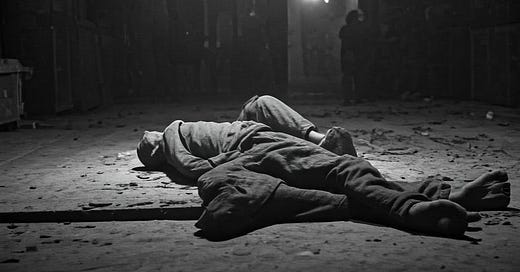From Tuomas Malinen on Geopolitics and the Economy.
Issues discussed:1
The best-case scenario leading to truce and negotiations after the collapse of the Armed Forces of Ukraine (AFU).
The worst-case scenario leading to a regional war after the collapse of the AFU.
How do we get to the path leading to peace.
Ukraine has become something of a re-entry way to geopolitics for me. This is mostly, because I have made a complete 180 degree turn in my views towards the war between Russia and Ukraine. I started with an over-whelming support for Ukraine (see, e.g., this, this and this), which turned into a suspicion in September 2022, and into a full opposition five months later. Now, I want to understand, what could happen in Europe, if the Armed Forces of Ukraine (AFU) would collapse, a point which edges closer each passing day.
I present two, the best-case and the worst-case, scenarios for post-collapse Ukraine (and Europe). By collapse I mean a mass retreat of soldiers and battle-field commanders from the frontlines across the nation. Such an event may come about much easier than many think. This is because in a situation, where reserves are highly limited, like they are now in Ukraine, collapse of some sections of the frontline can come rapidly leading to panicky capitulations across the entirety of the frontline. When there are no amble reserves to strengthen the failing sections, there’s a risk of forces becoming pocketed in, forcing a wide-scale retreat. This is, e.g., what happened to Finnish Defence Foces in the Karelian Isthmus in early summer of 1944.2
More precisely, I will sketch two plausible paths of developments after the defences of Ukraine crumble. I will not go into specifics of possible military developments, because that’s not my expertise. No one also can honestly state that they would know what happens after a collapse of the AFU, but we can speculate. Let’s dive in.
Post-requiem of the AFU: The best-case
The best-case scenario assumes that there will be no aim of the NATO Deep State or Ukrainian leadership to push the whole continent into a war. Based on what we have seen, the opposite seems to hold. Moreover, the best-case scenario assumes that President Trump is willing to accept Ukraine losing a large chunk of its landmass and to end the open-door policy of NATO. We at GnS Economics have recently warned on the possibility of a failure of President Trump in Ukraine, as it appears that he would not be willing to commit to such conditions.
These assumptions lead to 10 developments that could occur after the collapse of the AFU, in the best-case:
Russian troops quickly progress to the banks of the Dnepr.
Generals of the AFU hastily secure the defences of Kiev.
The United Nations jumps into action with the Security Council calling for an immediate ceasefire supported also by Russia.
Russian troops halt their progress to the Kherson-Dnipro-Kiev -line (along the Dnepr).
NATO halts all Ukraine/NATO attacks to Russian troops in Ukraine, by the order of President Trump.
Presidents Donald Trump, Vladimir Putin and Volodymyr Zelenskyy agree on the terms of an U.N. monitored line of ceasefire along the Dnepr.
Russia limits its military presence to ceded areas and evacuates attack systems to sufficient distance from borders (established line of ceasefire) of the remaining Ukraine.
The EU and the US stop all deliveries of weapons and volunteers to Ukraine.
The EU and the U.S. agree on an emergency economic support package for the (remaining) Ukraine.
The neutrality of Ukraine is agreed as the starting point of peace negotiations including all the major parties: China, The EU, Ukraine, Russia, the United Kingdom, the United States and NATO.
Essentially, the best-case scenario mimic the developments and actions we would need to see to establish a (lasting) peace in Ukraine. At this point, this looks unlikely, which is why need to turn to the worst-case to understand what may come.
Post-requiem of the AFU: The worst-case
Keep reading with a 7-day free trial
Subscribe to GnS Economics Newsletter to keep reading this post and get 7 days of free access to the full post archives.



